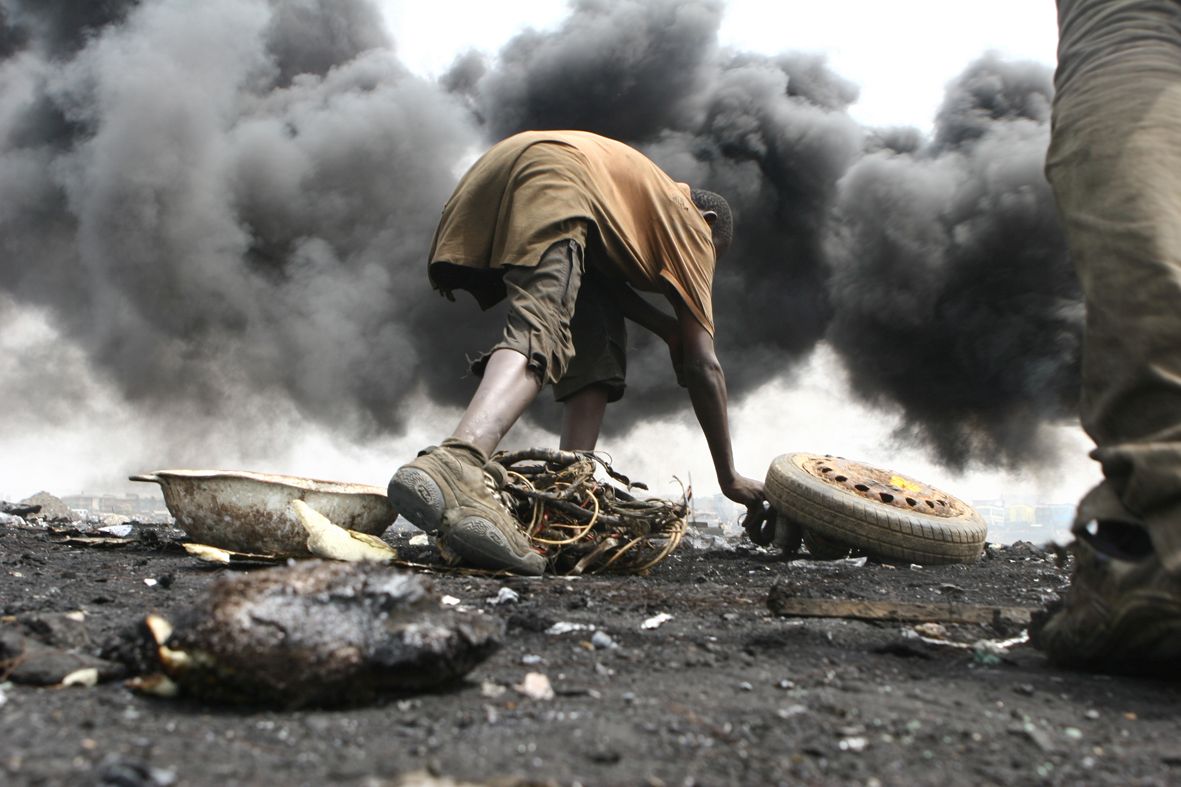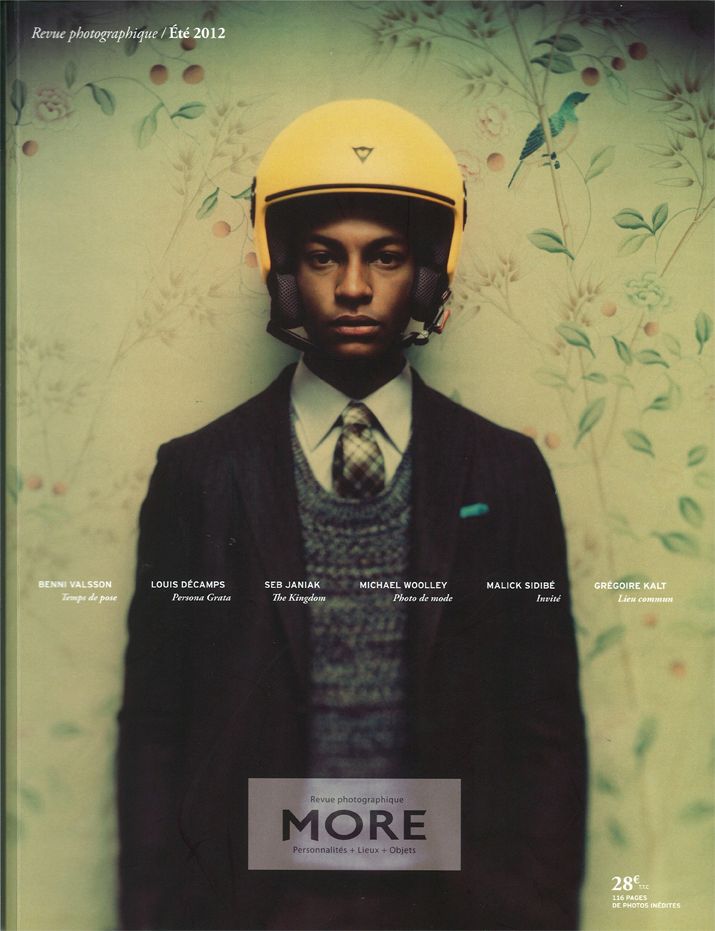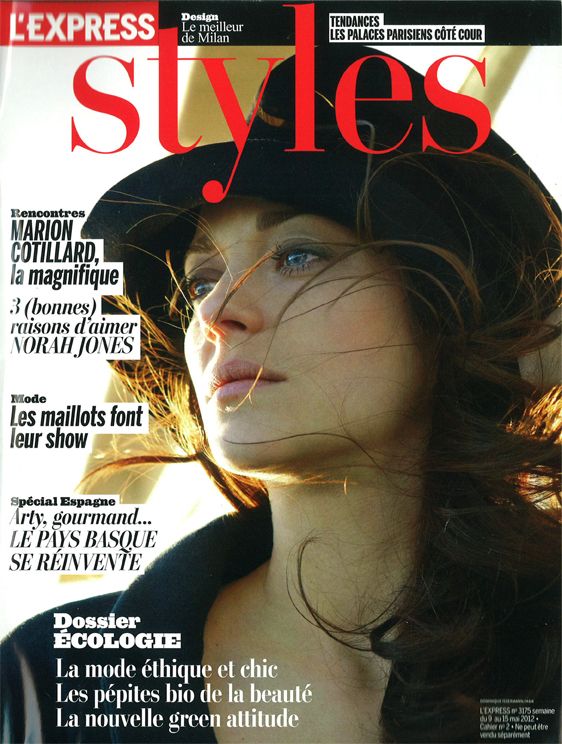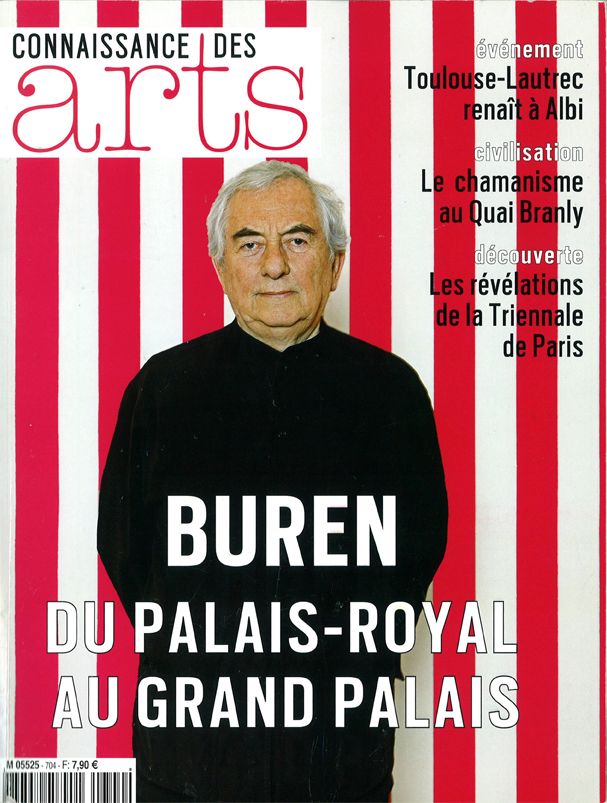Presentation
Nyaba Ouedraogo was born in 1978, and could have run the 400 meters, but a serious injury caused this former athlete from Burkina Faso to turn to photography. Assistant to the Parisian photographer Jean-Paul Dekers, still-life photographer, fashion and industrial photographer, and a travel enthusiast, Nyaba Leon Ouedraogo is now devoting himself to photographic journalism.
His approach, as much photojournalism as it is documentary work, consists in "not showing images for what they depict, but for what they transmit".
He is the co-founder of the group "Topics Visual Arts Platform".
Biography
SOLO EXHIBITIONS
2012
- La Galerie Particulière, Paris
2010
- Galerie Ben, Paris
2009
- Angers, Tour Saint-Aubin, Semaine Européenne de la Culture
2006
- « Enfants de Bahia », Paris
2005
- « Sur le vif », L'espace 7 Parnassiens, Paris
2004
- « Mic mac contemporain », Casablanca, Maroc
COLLECTIVE EXHIBITIONS
2011
- « Growth », Prix Pictet, exposition de shortlistés, Passage de Retz, Paris ; Real Jardin Botanico, Madrid ; Museum of Photographic Arts, San Diego ; The Corcoran Gallery of Art, Washington ; Dublin Museum of Photography ; The Empty Quarter Gallery, Dubai ; Ayyam Gallery, Beyrouth ; Galerie Les Filles du Calvaire, Paris
2010
- « 3ème Festival Mondial des Arts Nègres », Dakar, Sénégal
- « Climate change in Africa », Cancun, Mexique
- « Prix Pictet », Galerie Les Filles du Calvaire, Paris
2009
- « Visa pour l'image », Perpignan
- « Entre-vues, photographie contemporaine en Caraïbe » Fondation Clément, Martinique
PUBLICATIONS
2012
- Connaissances des Arts, may
- Télérama
- Le nouvel observateur
2011
- Photonews, february
- Ft weekend magazine Prix Pictet
- Le monde Magazine, march
2010
- View Magazine Photography, série « L'enfer du Cuivre », june
- Usbek et Rica, « Les Casseurs de Granite », june
- Courrier International, série « L'enfer du Cuivre », march
2009
- Photo, N° 460, june
- Géo Magazine, april
2008
- Courrier International Hors série N°26, december
AWARDS & GRANTS
2010
- Shorthlist Prix Pictet
- Sélection Prix Scam
- Finaliste Prix International la Planète Manche
- Prix « Coup de coeur » concours Bourse du Talent
2009
- Prix « Coup de coeur », Concours Bourse du Talent
2008
-Sélection, Concours Photographie sociale, ville de Sarcelle
Agency collaboration : SIPA PRESS
Exhibitions
Texts
The Hell of Copper
Over the past few years Ghana has become one of the principal countries to receive electrical waste materials coming from Europe and the United States. In The Hell of Copper I wanted to be as precise as possible; not showing my images for what they depict, but for what they transmit. These thousands of used computers have dramatic consequences for the environment and the health of the workers.
In Accra, the capital of Ghana, a true retail chain has been established around the "e-waste" traffic. It is an illegal, but tolerated business since it generates enormous amounts of money. Ghanaians living in Europe and the United States collect used computers and send them by boat to the port of Tema, where wholesalers buy up the stock. The machines are then put on the road to Accra, where buyers purchase them and have them burned by children. The copper that is culled is then resold to Nigerians or Indians, who rework it mostly to make jewellery that is sold cheaply in Europe. In the world, there are various cemeteries for computers "Nigeria, Vietnam, India, China, the Philippines" like the one at the Aglobloshie Market. According to the UN, up to 50 million tons of electrical and electronic waste are thrown away in the world every year. Thus, the garbage of the rich poisons the children of the poor.
The dump at the Aglobloshie Market spreads over 10 kilometres. From dawn to dusk, dozens of young Ghanaians, from 10 to 25 years of age, exhaust themselves doing this, seven days a week. Their mission is to disassemble the old computers and burn certain plastic or rubber components to cull the precious copper, which will then be resold. Everything is done by hand or with iron bars, makeshift tools found among the refuse. They have neither masks nor gloves. There are not even any functioning toilets.
The children of the Aglobloshie Market are exposed to substances and materials that are particularly harmful to their health, which Greenpeace analyzed in a report published in 2008. These are:
-Lead: found primarily in the cathode tubes and monitors, it can harm the nervous, reproductive, and circulatory systems-Mercury: found in flat screens, it can harm the nervous system and the brain, especially in young children.
-Cadmium: found in computer batteries, this toxic product is dangerous for the kidneys and the bones.
-PVC: when burned, this plastic used to insulate electrical wires gives off carcinogenic chemical substances that can cause respiratory, cardiovascular and dermatological problems.
Toxic substances that are given off during burning also contaminate the water and the ground of the dump, which cows and sheep used for pasture amidst the carcasses of computers. The planet and its citizens live through electronics. Now people must understand the injustices and the sad environmental and human consequences of our global electronic economy.



